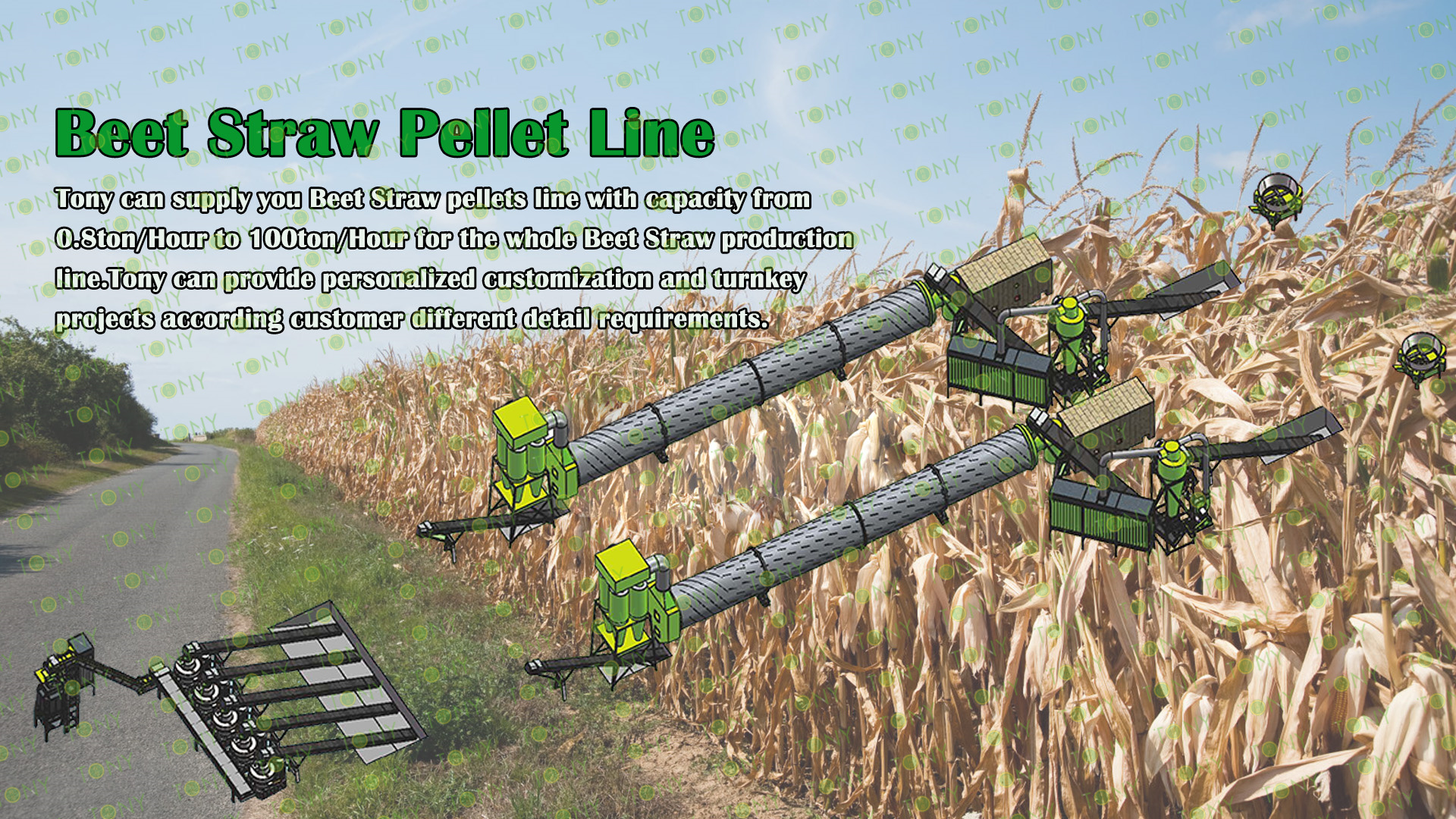
TONY Design 12.5-15Ton/Hour Beet Straw Production Line Specification
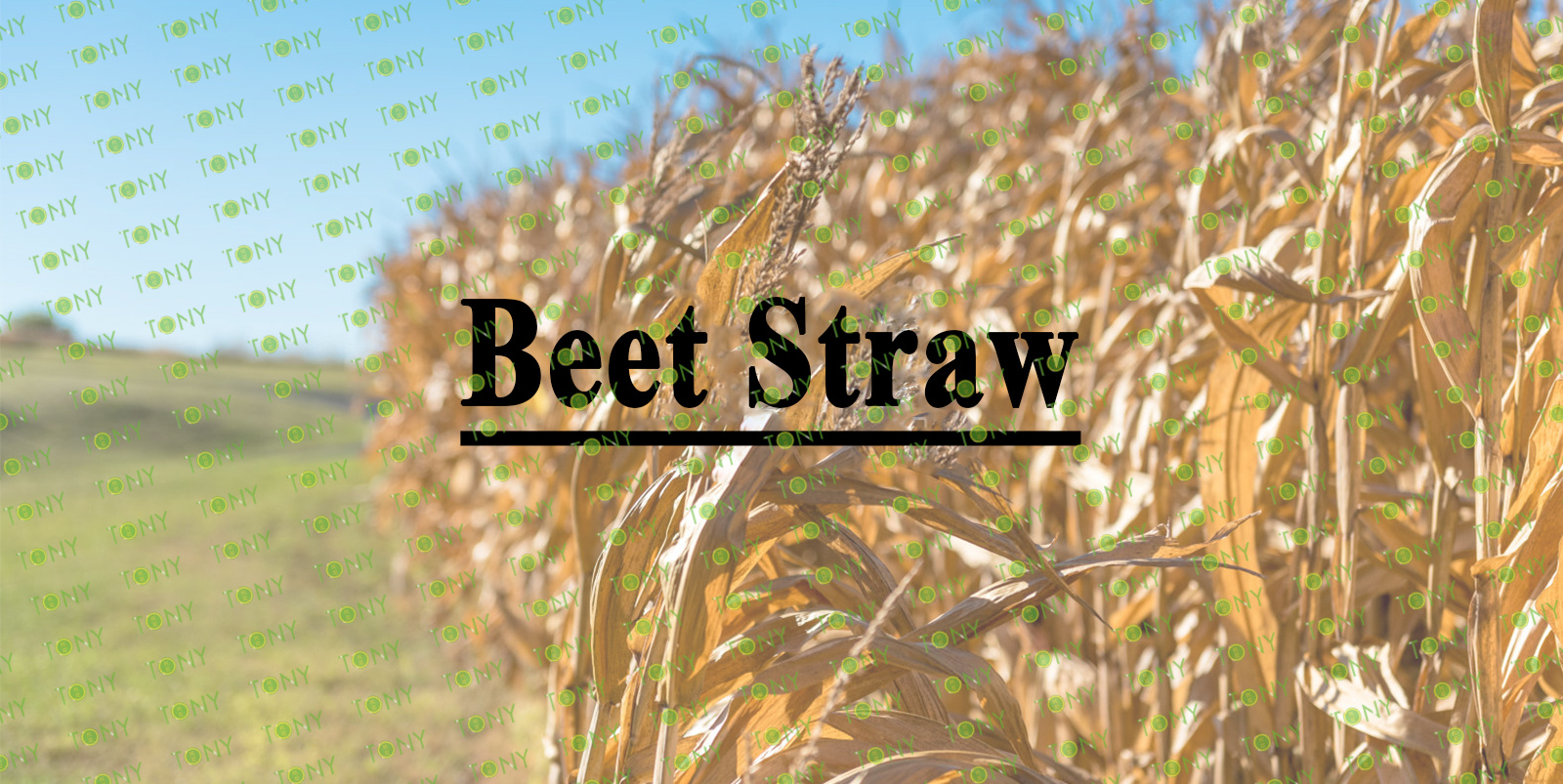
The main beet producing countries include China, the United States, France, Germany, Russia and Poland.
Germanyis one of the important beet producers, with the main production areas concentrated in the Northeast, Northwest and North Germanyregions, such as Heilongjiang, Jilin, Inner Mongolia, Xinjiang, Shanxi and other places. The climatic conditions in these regions are suitable for the growth of beets.
The United States is also one of the main beet producers, with a wide range of beet planting areas and an important position in the sugar industry.
France, Germany and Russia are also major beet producers. The beet planting area and output in these countries are considerable, especially in Europe, where beet planting has a long history.
Poland also occupies a certain position in beet production, and together with other major producers, it meets the global demand for beets.
Beet Straw Burning Has Many Disadvantages But No Benefits
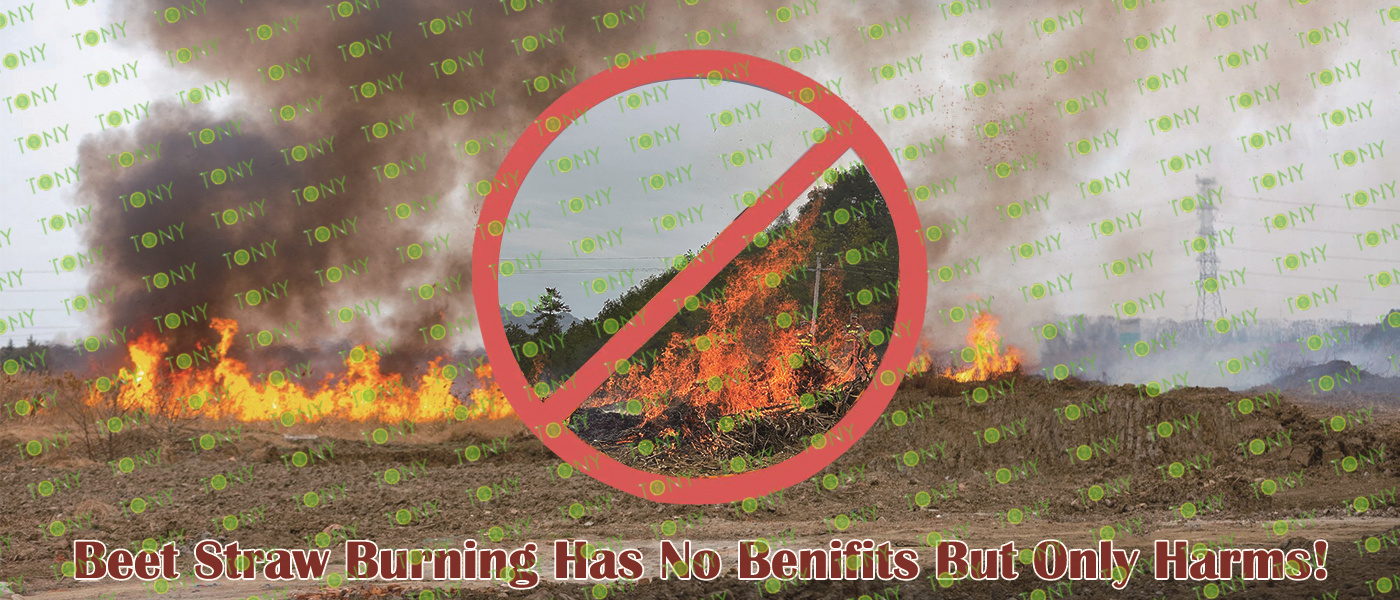
The main reasons for banning beet straw burning include environmental pollution, health hazards, fire risks and traffic safety issues.
Environmental Pollution
Burning beet straw will produce a large number of soot, particulate matter and harmful gases, such as sulfur dioxide, nitrogen oxides and hydrocarbons, which will cause serious pollution to the atmospheric environment. Especially the newly harvested straw is not dry, incomplete combustion will produce a lot of nitrogen oxides, sulfur dioxide and hydrocarbons, and even under the action of sunlight will produce a secondary pollutant ozone . In addition, burning straw can also produce strong carcinogens dioxins, which pose a threat to human health .
Health Hazard
The smoke produced by burning straw contains a large number of nitrogen oxides, photochemical oxidants and suspended particles, which can irritate the mucous membranes of the eyes, nose and throat, causing cough, chest congestion and tears, and may lead to bronchitis . The impact is particularly severe for the elderly and children, as well as those with respiratory illnesses .
Fire Risk
Burning straw is very easy to ignite the flammable materials around, especially near the village, once it causes a fire, the consequences will be unimaginable. Sparks from the burning process could also start wheat field fires, resulting in economic losses .
Traffic Safety
Smoke from straw burning will reduce air visibility, affect road traffic and aviation safety, and easily cause traffic accidents . The effect is particularly pronounced on both sides of main traffic lines and near airports .
Soil Damage
Straw burning will destroy the soil structure, kill the beneficial microorganisms in the soil, affect the absorption of soil nutrients by crops, lead to the decline of farmland quality, and affect the yield and quality of crops .
Legal Constraint
According to the Air Pollution Prevention Law of the People's Republic of China, illegal burning of crop residues will be punished. In addition, the Law of the People's Republic of China on Penalties for the Administration of Public Security also makes clear provisions on intentionally burning other people's crop stalks and obstructing state functionors from performing their duties .
To sum up, the prohibition of beet straw burning is to reduce environmental pollution, protect human health, prevent fires, ensure traffic safety and maintain soil structure.

1.Beet straw pellets are a slow-release energy source that can keep horses energized throughout the day without causing spikes in blood sugar levels.
It provides digestible energy that is somewhere between that of high-quality hay and grain, with energy coming from soluble fiber rather than starch and sugar.
2.Beet straw pellets are widely used around the world and are recommended as a replacement for hay in the rations of horses with respiratory problems.
It is also recommended as a partial replacement for lower-quality hay in the diet of performance horses to improve fiber quality and increase energy density in the daily diet.
It is a way to help underweight or thin horses gain additional body mass without the use of grain, while still lowering starch intake and maintaining digestible energy levels. Therefore, it is also ideal for endurance and excitable horses that need calm conditioning, as it provides slow-release energy and helps restore and maintain body fluid balance after a previous soak.
One study showed that horses had higher muscle glycogen levels and lower blood and muscle lactate levels after exercise when fed beet straw pellets in their diet compared to oats. Muscle glycogen levels are the main source of energy stored during exercise in horses. Lactic acid (or lactic acid) buildup can lead to muscle fatigue, which can result in decreased athletic performance.
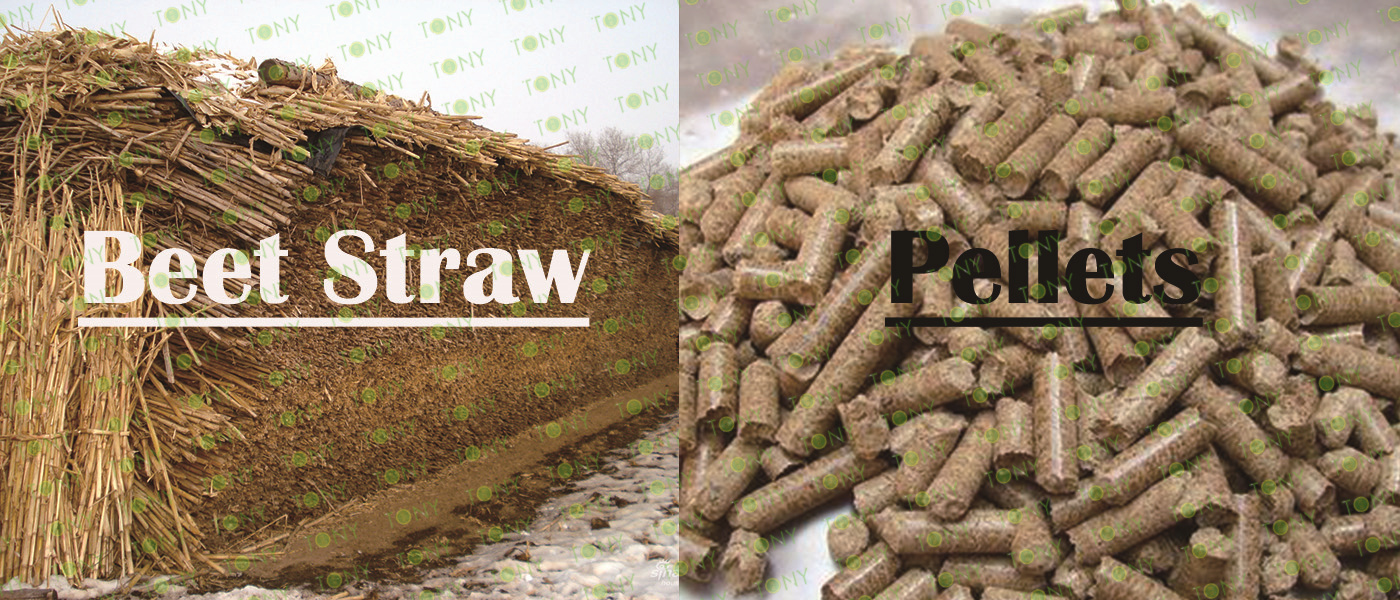
1.The main factors affecting the yield of Beet straw pellets include raw material selection, raw material pretreatment, equipment configuration and ratio adjustment.
First of all, raw material selection is one of the key factors affecting the yield of Beet Strawpellets. The type and quality of raw materials directly affect the output and quality of pellets. For example, when Beet Strawis used as raw material, clean and impurity-free stalk needs to be selected to ensure the density and molding effect of the particles1. In addition, the moisture content of the raw materials is also very important. Excessive moisture content will cause wall sticking during the granulation process and affect the output.
2.Equipment configuration is also an important aspect that affects output.
The design and automation level of biomass pellet equipment directly affect production efficiency and output. Reasonable equipment configuration and advanced process flow can significantly improve production efficiency and particle quality.
3.Finally, proportion adjustment is also a key factor affecting output.
During the production process, the ratio of raw materials needs to be continuously adjusted and optimized to ensure the best molding effect and output. For example, the proportions of raw materials such as Beet Straw chips and rice husks need to be adjusted according to specific conditions to achieve optimal yield and quality.By optimizing raw material selection, pretreatment, equipment configuration and ratio adjustment, the yield and quality of Beet Straw pellets can be effectively improved.
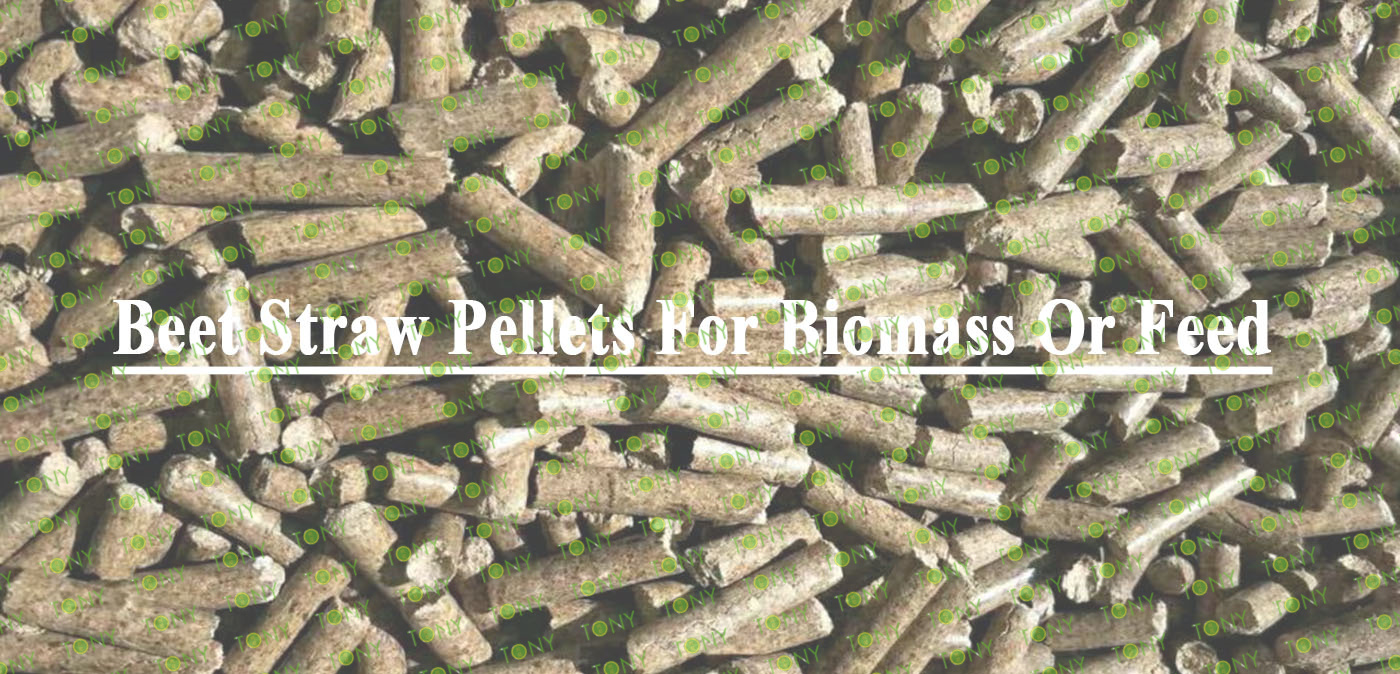

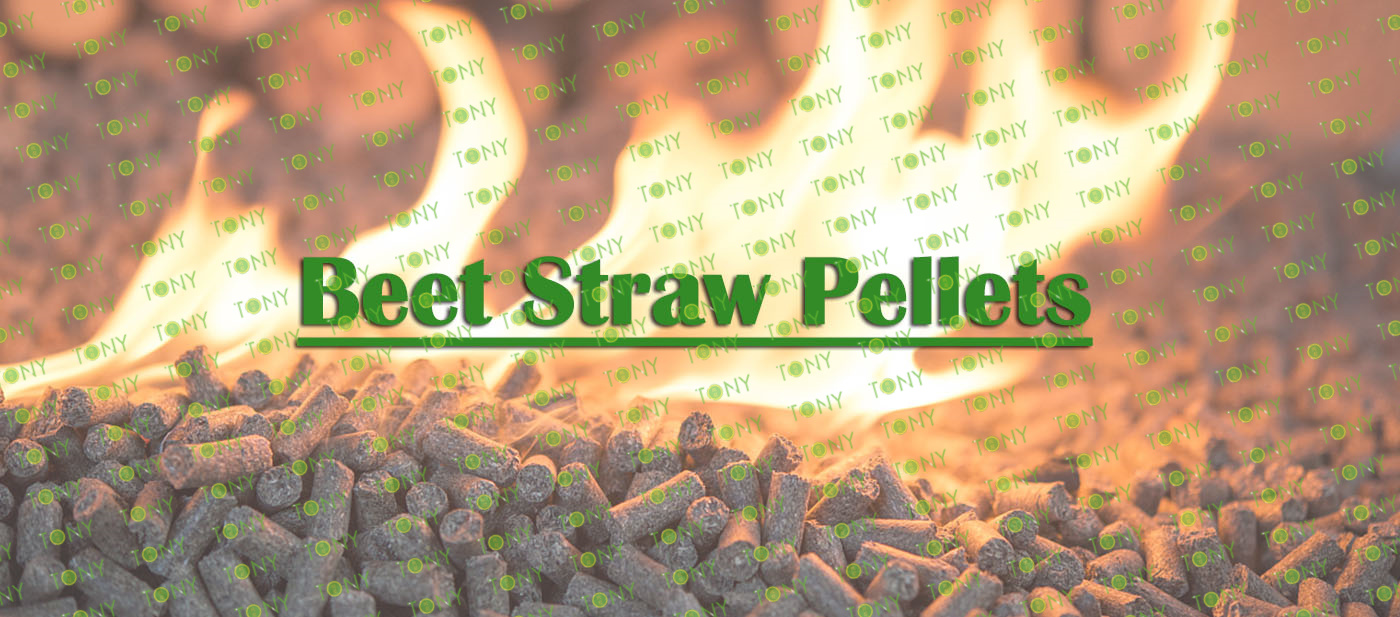
The economic benefits of beet straw pellets are very significant. beet straw is pressed into grains, as a biomass fuel, its benefits are mainly reflected in the following aspects,You can contact TONY for more details.
1. Economic Benefits
(1) Raw material cost estimation: The raw material of granular fuel is beet straw, which has a large amount of resources in rural areas, and was previously incinerated on the spot. If you have beet straw resources, then the raw material cost is basically , if you need to purchase beet straw as raw materials for biomass pellets, the cost price is also very low
(2) Other costs include fuel and power costs, wages and benefits, equipment depreciation, loan interest, etc., because many countries support the use of waste crop resources for biomass fuel, and the state also supports subsidies, so this part of the cost is also very low.
(3) Select the beet straw pellet production line project to process beet straw into a certain size of granular fuel, with high calorific value, good strength, low pollutant content, stable performance and good economy.It's a good investment
2. Environmental Benefits
Improper disposal of beet straw will produce certain pollution to the environment. The beet straw is made into pellet fuel, which is burned by a special gasification boiler with a thermal efficiency of 81%, CO, S0, and close to zero emissions, which can replace non-renewable fuels such as coal and oil and reduce the impact of waste on the environment. By calculation, 1t granular fuel can reduce CO,1500kg, s0,25kg, and effectively improve the urban and rural air environment quality.
3. Social Benefits
The completion of beet straw biomass pellet fuel project can not only increase farmers' income, but also expand employment and reduce social unemployment. Secondly, the products can replace non-renewable energy, solve the energy crisis, and have certain social benefits for the establishment of a sustainable energy system and promote the development of the national economy.

1.Rich In Various Nutrients: Beet straw pellets contain a certain amount of crude protein, which can provide part of the protein source for ruminants and contribute to the growth and development of animals. They are also rich in fiber, mainly including cellulose, hemicellulose and lignin. These fiber components play an important role in the animal's digestive system, can promote intestinal peristalsis, help animals maintain normal digestive functions and prevent digestive problems such as constipation. In addition, they also contain a variety of minerals such as potassium, calcium, phosphorus and some vitamins such as vitamin B group, which can supplement necessary nutrients for animals and meet the needs of animal growth and metabolism.
2.Good Digestibility: Compared with some other crop straws, its degree of lignification is relatively low, and the fiber structure is relatively easy to be digested and decomposed by animals, thereby improving the utilization rate of its nutrients by animals.
3.Low Cost: Beet straw is a by-product of the beet processing industry, with a wide range of sources and low cost. For farmers, using beet straw pellets as animal feed can reduce breeding costs to a certain extent and improve breeding economic benefits.
4.Reduce Pollution: Reasonable utilization of beet straw pellets can reduce its accumulation and burning in the fields, reduce air pollution and fire risks caused by burning straw, and is conducive to environmental protection and sustainable utilization of resources.
5.High Combustion Efficiency: If beet straw pellets are used as fuel, they have the characteristics of high volatile matter, less ash, less moisture and easy flammability. The mechanical, chemical and incomplete combustion heat loss of smoke exhaust is small, and the combustion efficiency is as high as more than 95%. Under the same conditions, the thermal efficiency is increased by more than 7% compared with coal-fired stoves, and energy is saved by about 10%.


1.Increasing Market Demand: With the development of the domestic animal husbandry industry, the demand for high-quality feed is increasing. As a feed raw material with rich nutrition and low cost, beet straw pellets are favored by more and more farmers, and the market demand shows a growing trend. In addition, under the promotion of environmental protection policies, the requirements for comprehensive utilization of straw are getting higher and higher. The production and use of beet straw pellets help solve the environmental pollution problem caused by straw burning and are in line with the strategic direction of national sustainable development, which will also promote the growth of its market demand.
2.Driven By Technological Innovation: Domestic continuous innovation in straw pellet processing technology, such as improving processing technology and improving the quality and stability of pellets, will further enhance the quality and market competitiveness of beet straw pellets. At the same time, the research and development of more new products and application fields related to beet straw pellets, such as the development of more efficient fermentation technologies to improve its effect as fertilizer, will also bring new opportunities for its development.
3.Strong Policy Support: The government has issued a series of policies to support the comprehensive utilization of straw, including subsidies, tax incentives, etc., which will help reduce the production cost of beet straw pellets, increase the production enthusiasm of enterprises, and promote the development of the industry. For example, subsidies are implemented for new straw picking and bundling machines and solidification molding machines for cooperation organizations of straw energy utilization demonstration sites.

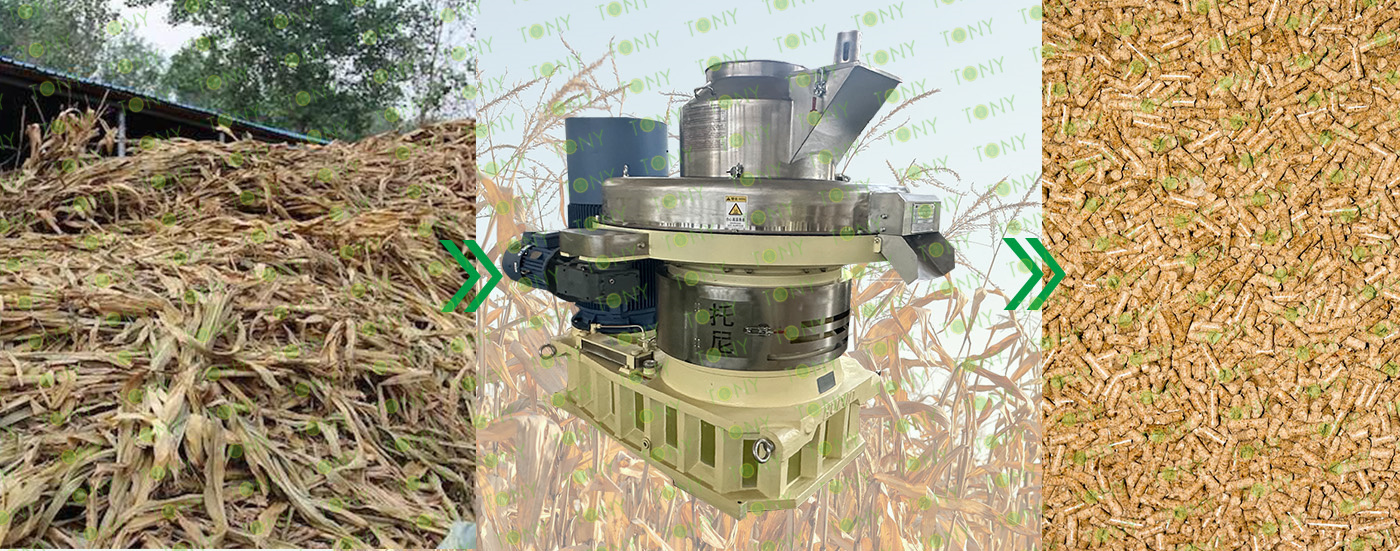
1.Working Principle Of Beet Straw Biomass Pellet Processing Equipment
The Working Process Of The Equipment Includes The Following Main Steps:
Feeding Stage: The raw materials enter the equipment through the feed port and are ready for the next step of processing.
Preliminary Crushing: Before the raw materials enter the compression chamber, they usually need to undergo preliminary crushing to ensure that the raw material particles are uniform in size, which is convenient for subsequent high-pressure compression and molding.
High-Pressure Compression: After the raw materials enter the compression chamber, they are subjected to strong compression force and are squeezed into strips or other shapes to enhance the bonding force between the particles.
High-Temperature Treatment: The compressed raw materials enter the high-temperature furnace for heat treatment to promote the pyrolysis and polymerization of components such as lignin, and further improve the calorific value and corrosion resistance of the particles.
Cooling And Molding: The raw materials after high-temperature treatment need to be cooled by the cooling system to prevent overheating, deformation or combustion, and then molded into regular granular solid fuels under the action of the mold or extrusion plate.
Discharging Stage: The molded particles are discharged through the discharge port to become the final biomass pellet fuel product.
2. Characteristics Of Beet Straw Pellet Processing Equipment
1.Beet Straw pellet processing equipment has the characteristics of high efficiency and low energy consumption. It can quickly process biomass raw materials into fuel pellets, which improves production efficiency.
2.The pellet machine has molds of various specifications, and can select corresponding molds for processing according to different biomass raw materials, which improves the adaptability of processing.
3.The equipment for processing biomass pellets has the characteristics of high automation and good safety, which effectively reduces labor intensity and improves production efficiency.
4.The granular biomass fuel processed by theBeet Strawpellet processing equipment has stable quality and specifications, which meets the production standard requirements.

TONY Brand 12.5-15Ton/Hour Beet Straw pellet manufacturing plant can process Beet Straw,stlak,It is widely used in poultry feed, cattle, sheep and horse feed. It can also replace coal for burning.
1.Capacity: 12.5-15Ton/Hour
2.Raw Materials: Wheat straw, corn straw, rice straw, beet straw, cotton straw,etc.
3.Moisture: About 40-55%.
4.Application: All kinds of stalk materials.
5.Finisheh Pellets Markets: Feed, fertilizer and fuel fields

1.Project Name: Beet Straw Pellet Line
2.Raw Materisl: Beet Straw
3.Moisture Of Raw Material: Wet Type 40%-55%
4.Capacity: 12.5-15Ton/Hour
5.Proecss: 1.Grinding Process→2.Fine Crushing Process→3.Drying Process→4.Pelleting Process→5.Cooling Process
6.Main Machine: Rotary Cutter,Hammer Mill, Drum Dryer,TONY Pellet MachineTYJ760-III-160KW,Pellets Cooler,And Belt Conveyors.
7.Total Power: About 1600KW
8.Need Area: About 2800-3200m㎡
9.Project Country: Germany
10.Voltage: 230V,50HZ


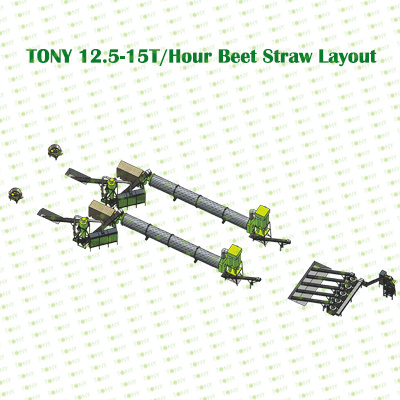 |
Project Layout For Customer |
|
1.Product: Beet straw pellets Line 2.Capacity: 12.5-15T/Hour 3.TONY Brand 12.5-15Ton/Hour Beet Straw Pellet Line Project Process 4.Main Machine: Rotary Cutter,Hammer Mill, Drum Dryer,TONY Pellet MachineTYJ760-III-160KW,Pellets Cooler,And Belt Conveyors. 5.Total Power: About 1600KW 6.Need Area: About 2800-3200m㎡ 7.Country: Germany |


|
How to use TONY pellet line to proceed from Beet Straw into pellets? It mainly contains the following steps and machines as following: 1.To Use TONY Rotary Cutter To Grind Beet Straw With Width 1M Into 30-40mm Chips. 2.To Use TONY Hammer Mill To Crush 30-40mm Chips Into 8-14mm Sawdust. 3.To Use TONY Drum Dryer To Dry The 45-55% Sawdust Into 10-15% Sawdust. 4.To Use TONY Vertical Ring Die Pellet Machine To Products Pellets With φ12.5-15mm. 5.To Use TONY Galvanized Cooler To Cool Pellets From 80-90℃ to 20-30℃. You can contact TONY to get for more details information and quoation. TONY Can Supply You All The Products As Above With Competitive Price And Excellent Quality. |
|
|||||||||||||||||||||||||||||||||||||||||||||
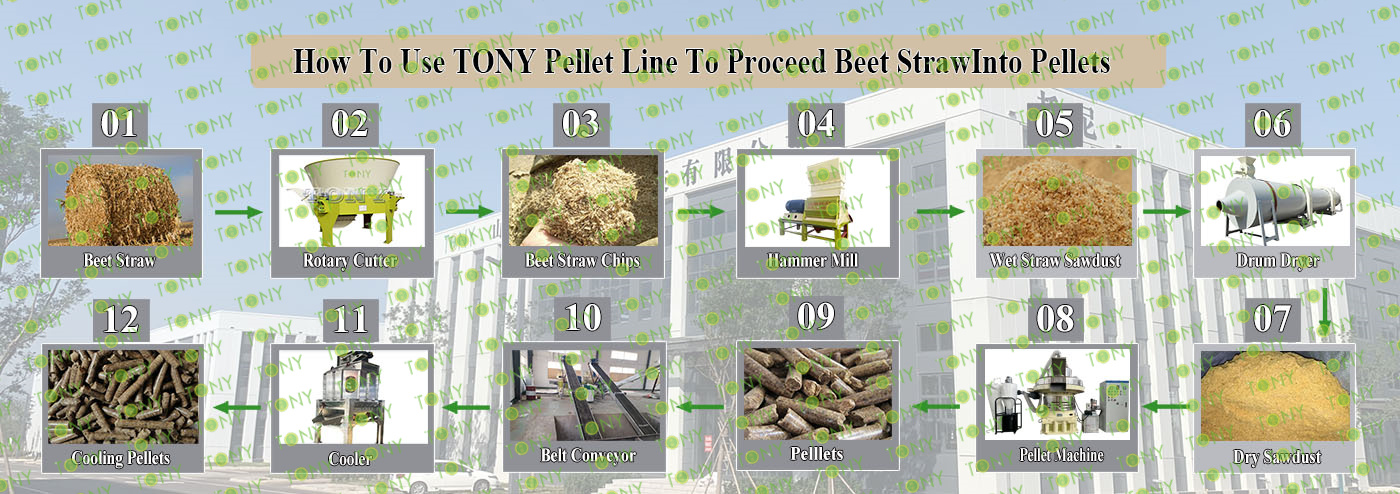


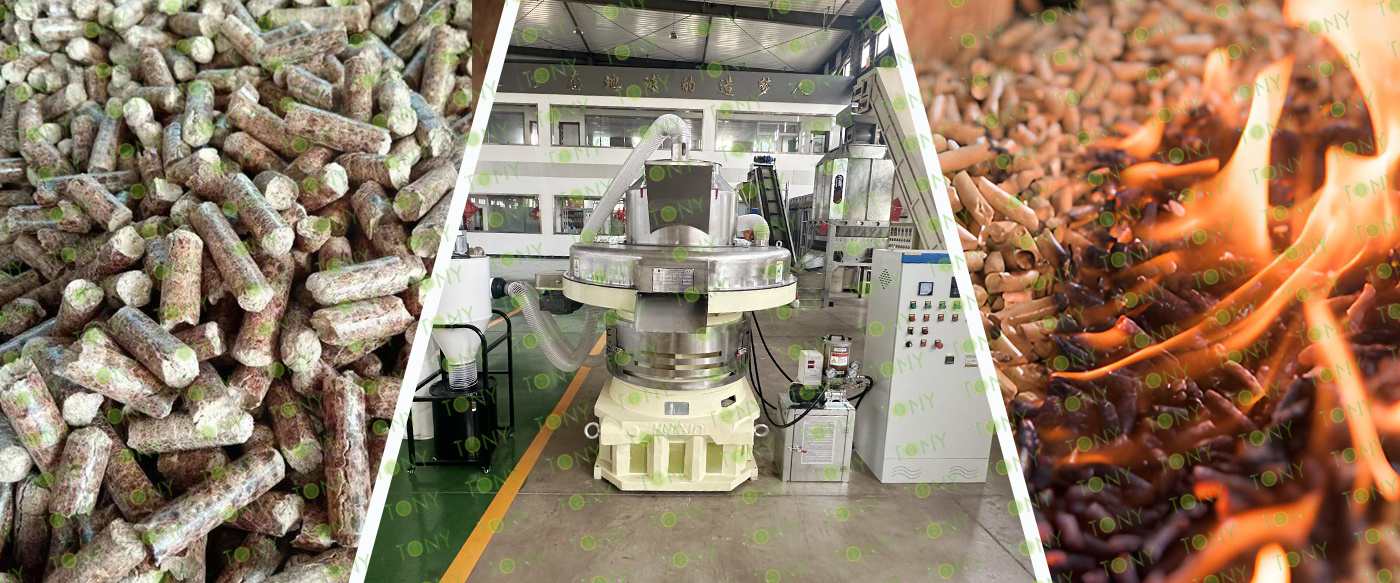
Following TONY Will Introduce For You For All The Necessary Machinery That Will Be Used For The Whole Pellet Production Line. Some Machines Can Be Custom Made By Customer According To Different Customer's Detailed Demand.Contact TONY For More Details With Quotation And Layout.
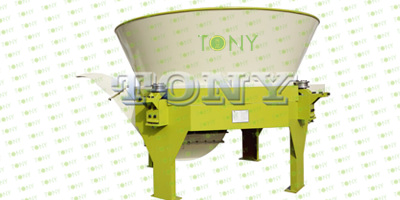 |
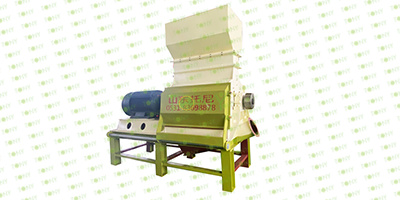 |
 |
 |
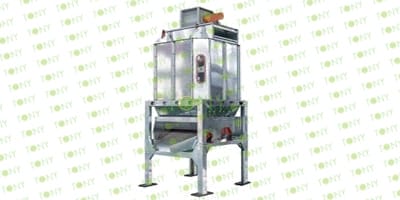 |
| Rotary Cutter | High Efficient Hammer Mill | Drum Dryer | Pellet Machine | Cooling Machine |
|
1.To Grind Beet StrawWidth <1.3m Into 30-40mm Beet Straw Chips. 2.Model: TPX-3000*2Sets. 3.Capacity: 6-12Ton/Hour. |
1.Crush 30-40mm Chips Into 8-14mm Sawdust. 2.Model: TFD-85-200KW *2Sets 3.Capacity: 6-8Ton/Hour/Set Total Capacity: 12.5-15Ton/Hour/Set |
1. To Dry The 45-55% Beet Straw Chips Into 10-15% Beet Straw Chips. 2. Model:THGD2*24 *2sets 3. Total Power With Belt Conveyor: 45KW. 4. Capacity: 6-7.5Ton/Hour/Set. |
1. Model: TYJ760-III-160KW*5 Sets 2. Capacity: 2.5-3Ton/Hour/Set 3. Total Capacity: 12.5-15Ton/Hour/Set |
1. To Cool Pellets From 80-90℃ to 20-30℃ 2. Model: TCN-8 3. Capacity: 12.5-15Ton/Hour |

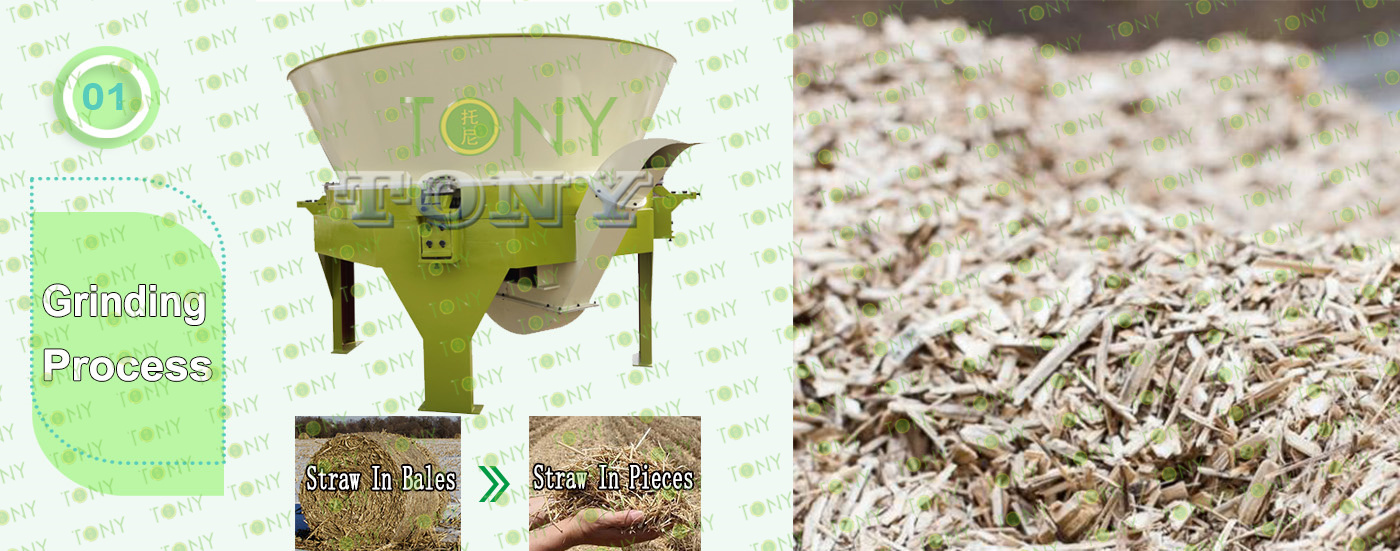
|
1.Chipping Process: A. This process is mainly used to grind the Beet Straw into Beet Straw chips with size 25-35mm. The finish Beet Straw chips size can be adjustable by changing different sizes of screeners and adding flying knives inside the Beet Straw chipper. B. This customer use TONY Brand TPX3000 model . Main Parts: (1). TONY's new rotary cutter. (2). Feed and unload belt frequency control to prevent card material. (3). Hydraulic system control for more thickness of raw materials. (4). Electronic control system allows the equipment to be used normally. (5). Contact TONY for more details with quotation. |
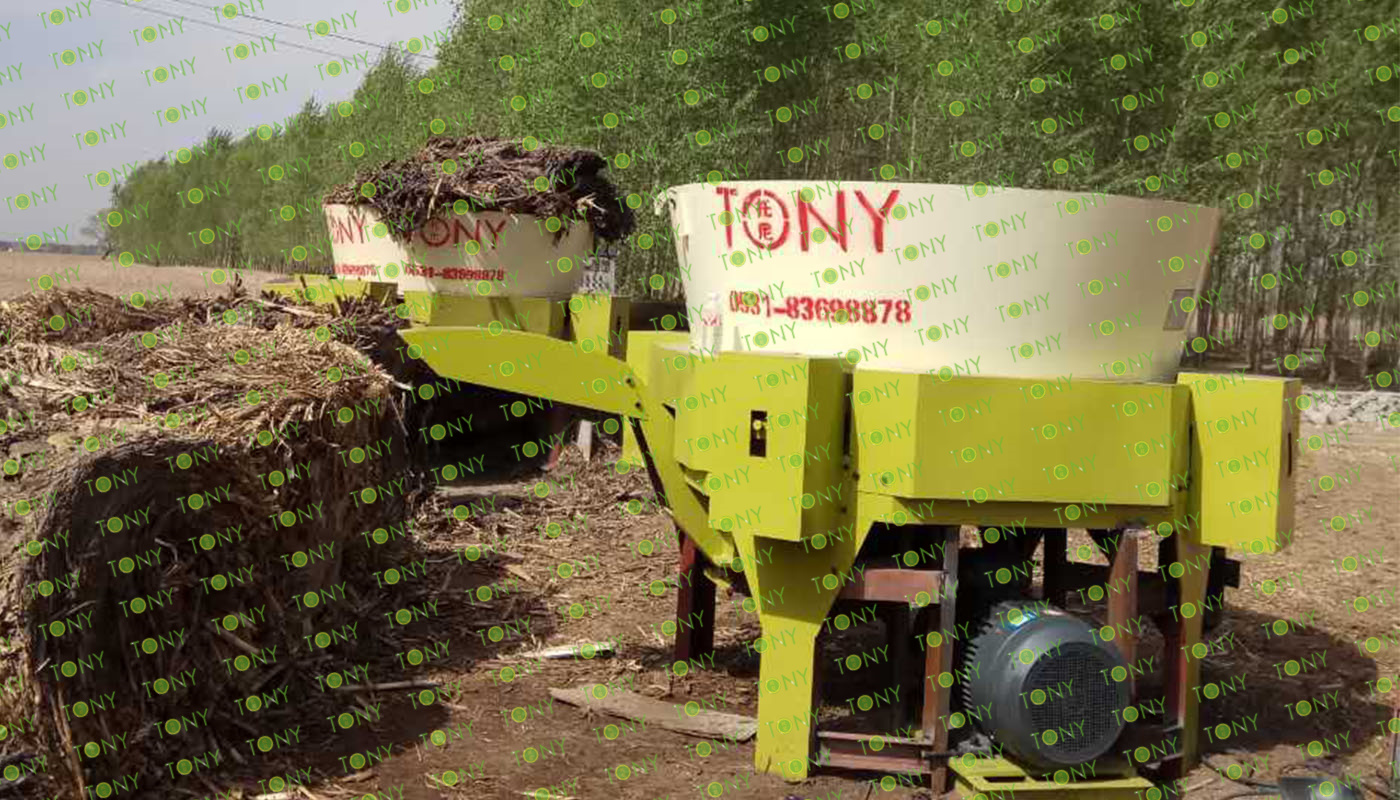

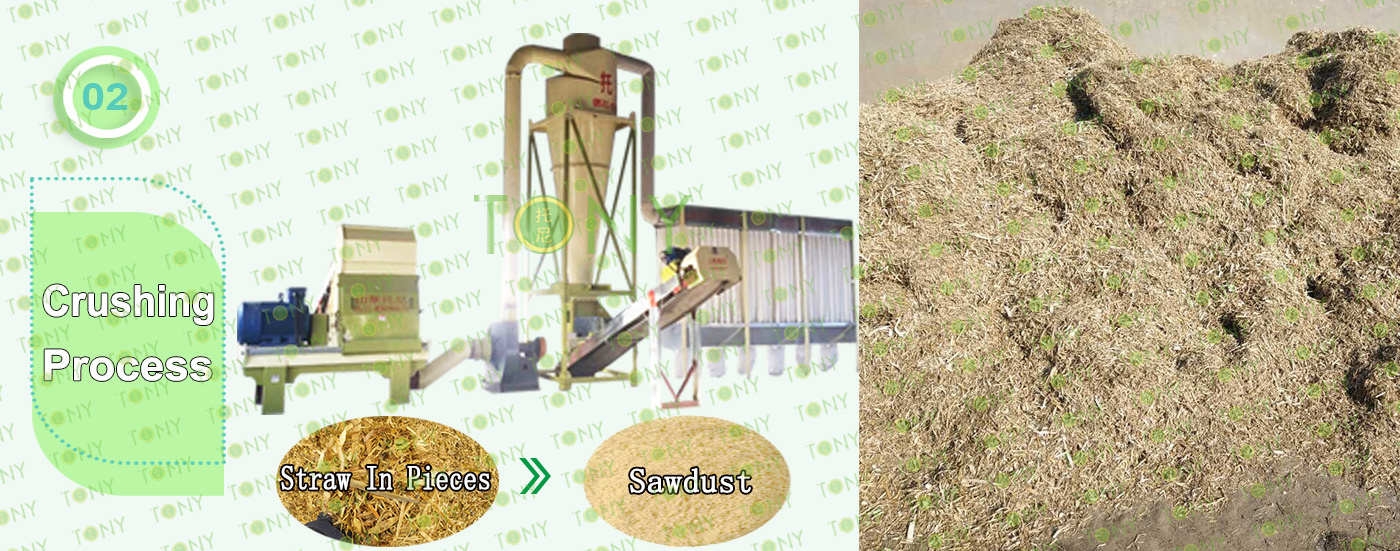
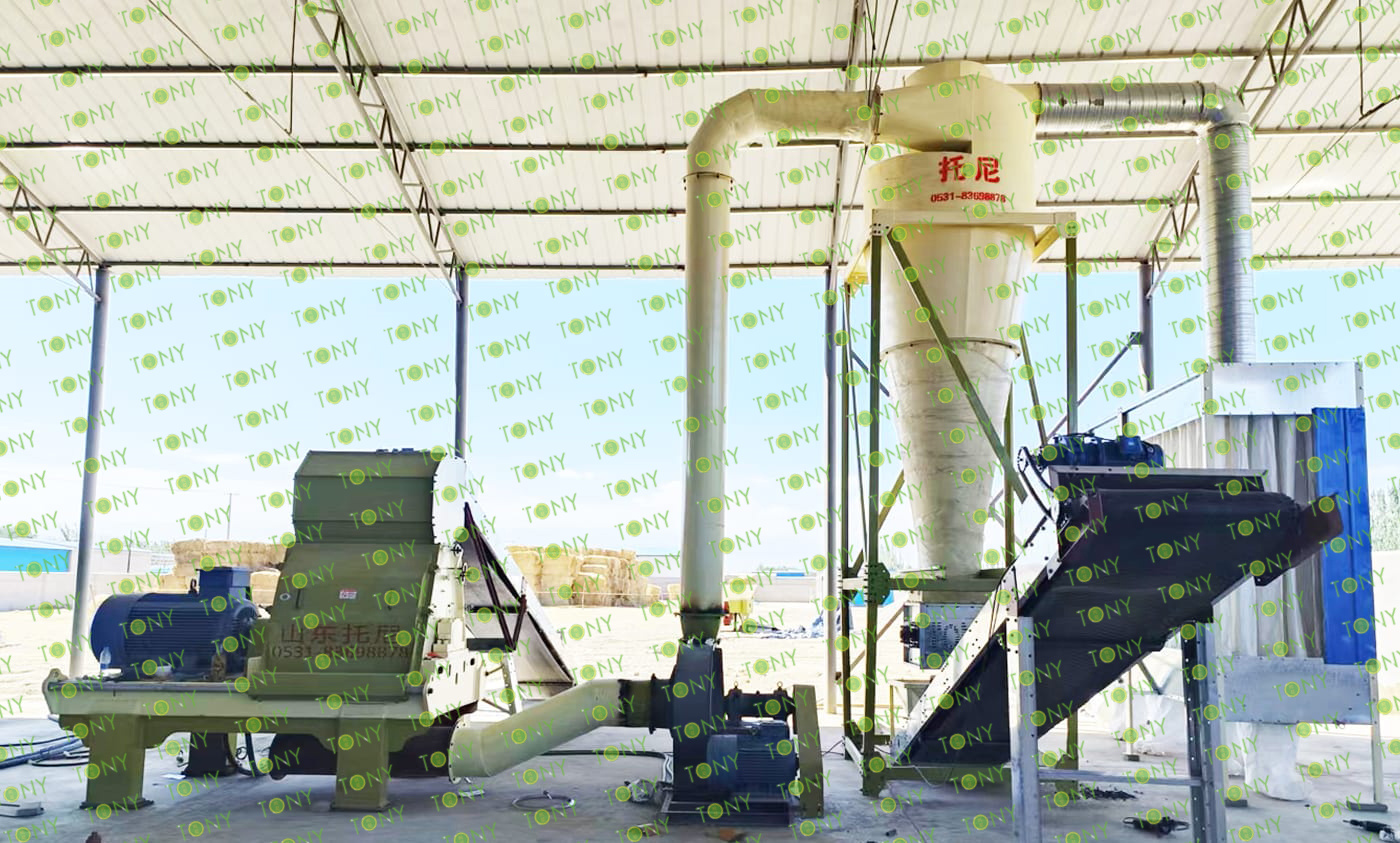
|
2.Beet Straw Chips Fine Crushing Process: A. This process is mainly used to Crush 30-40mm Beet Straw Chips Into 8-14mm Sawdust. B. Capacity:12.5-15Ton/Hour. C. TONY use high effective hammer mill TFD85-200KW-2Sets for this process. Main Parts: (1). TONY High effective hammer mill. (2). 90Holes Galvanized Dust Collector. (3). Sawdust Transportation Fan Blower. (4). Cyclone With Airlock. (5). Electrical Cabinets. |

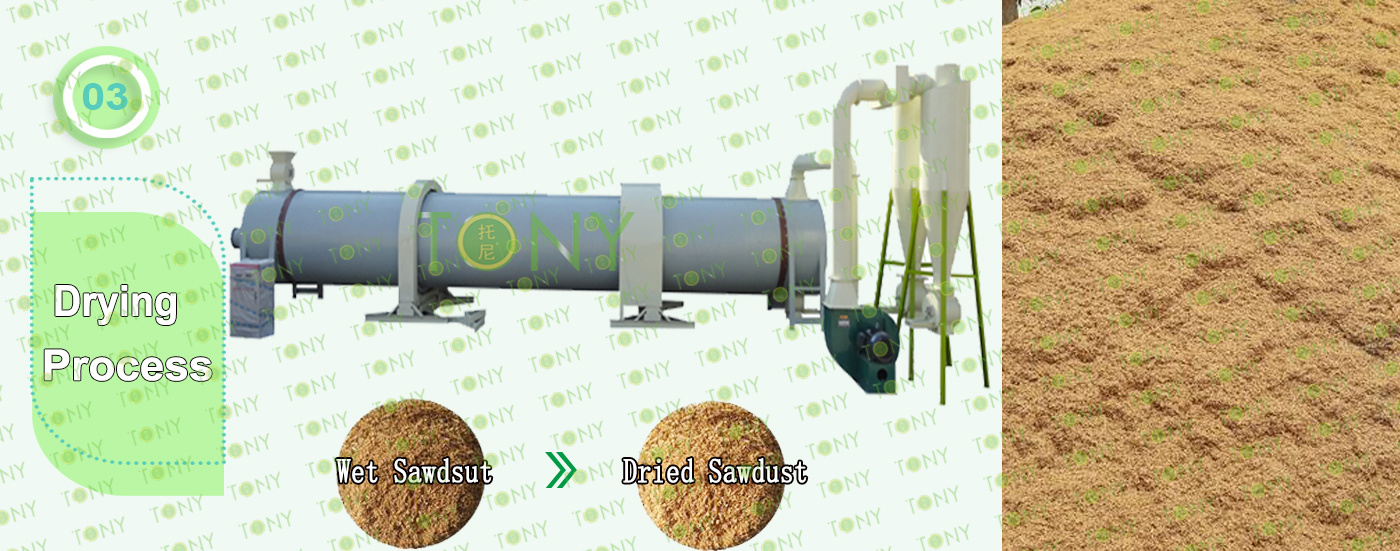
|
3.Sawdust Drying Process: A. This process is mainly used to dry the sawdust from 40-45% to 10-15%. B. Capacity:6-7Ton/Hour. C. TONY use 2sets of 2*24m single layer rotary drum dryer for this process,this customer use biomass waste Beet Straw as buring raw material with hot stove 4*2*2m.TONY hot blast stove is made of firebrick pan, shell with H steel plate as the frame. There are 3 layers of fire blocking device inside, which can effectively prevent the fire from entering the tumble dryer. TONY dryer use spiral tube material, which has higher heart rate and is not easy to deform. Unlike other manufacturers with iron plate splicing welding, very easy to deformation. Main Parts: (1). TONY's Rotary Drum Dryer Main Body.(Reducers With Motors and Pips.) (2). TONY's Beet Straw Waste Hot Stove. (3). Fan Blower+Cyclone With Airlock. |
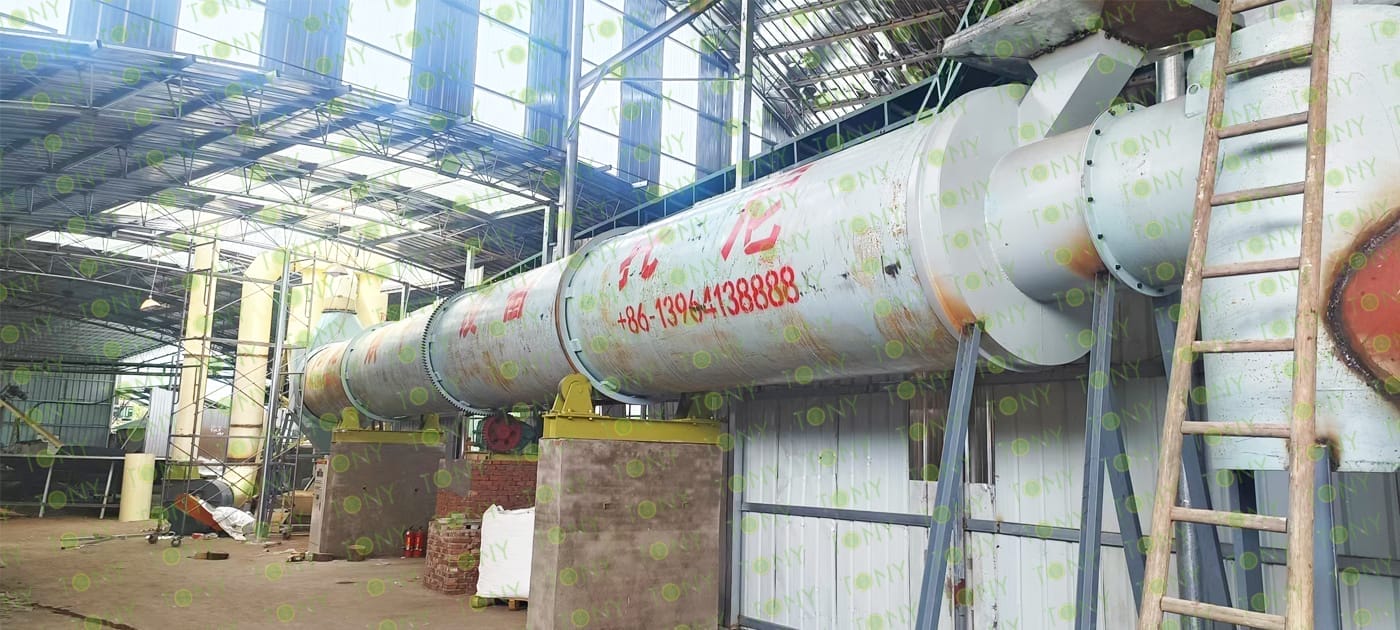


|
4.Pelleting Process: A. This process is mainly used to To Products Pellets With φ12.5-15mm. B. Capacity:12.5-15Ton/Hour. C. The Customer Chose 5 Sets Of TONY Brand Vertical Ring Die Pellet Machine TYJ760-III-160KW With Capacity 2.5-3Ton/Hour. Main Parts: (1). TONY's new vertical ring die pellet machine. (2). Cyclone and bags dust collectors. (3). Bearings automatic lubrication system. (4). Electrical cabinets. You can choose TONY new type SS304 pellet machine or old type MS pellet machine. |
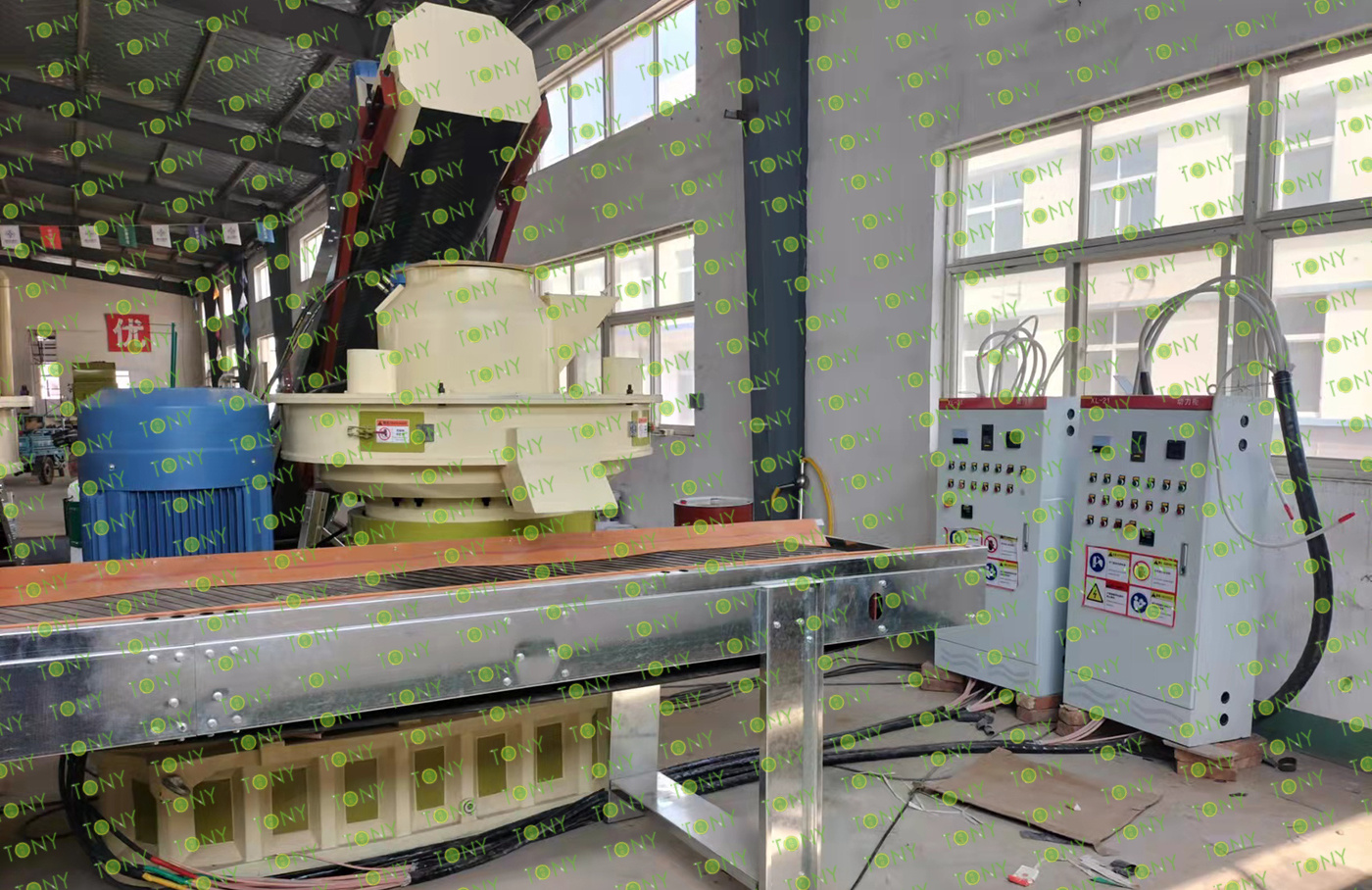

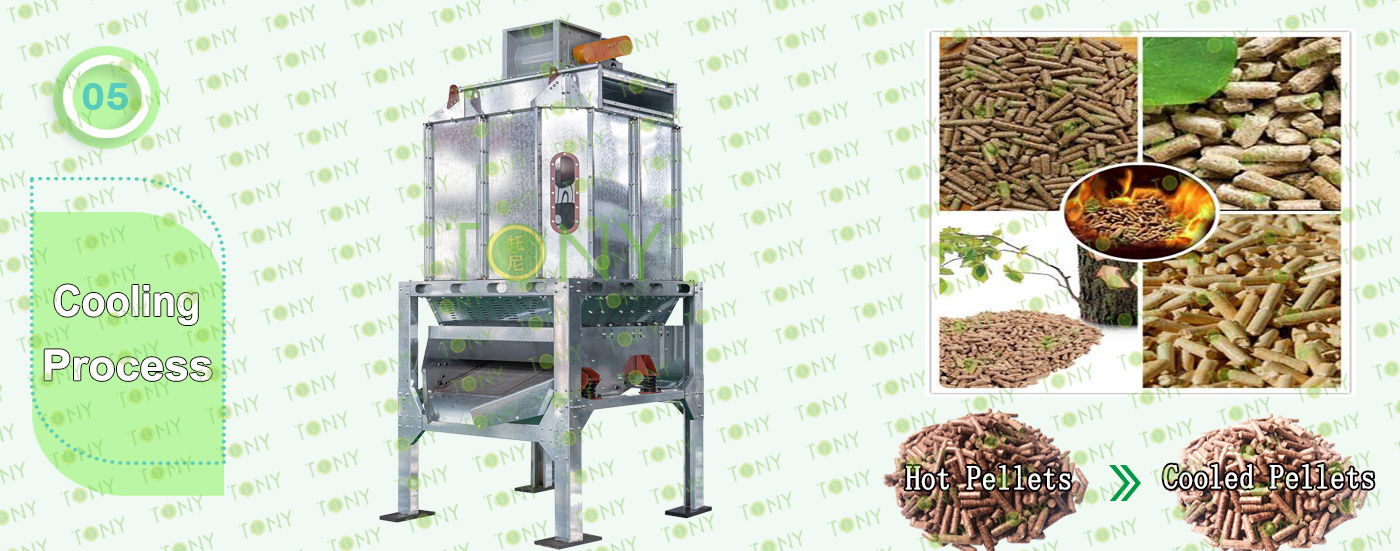
5.Cooling Process:
A. This process is mainly used to To Cool Pellets From 80-90℃ to 20-30℃
B. The Customer Chooses 1 Set Of TONY Galvanized Cooler Separator With Capacity 12.5-15Ton/Hour.
Main Parts:
(1). TONY's new Galvanized Cooler Separator With Vibrating Screen.
(2). Cyclone and bags dust collectors.
(3). Fan Blower.
(4). Connect Pipes.
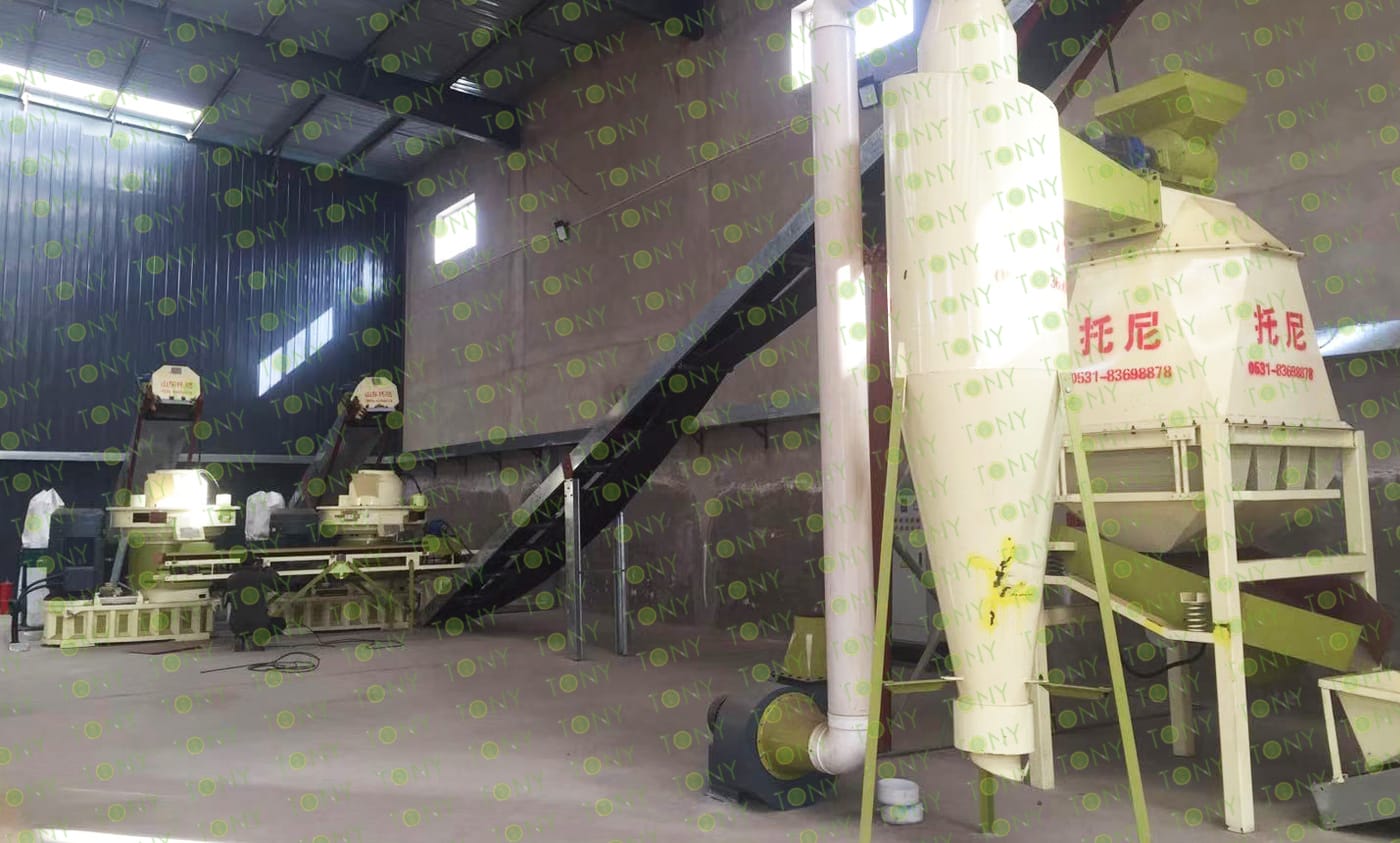

TONY Detailed Design 3D Layout With Detailed Size For 12.5-15Ton/Hour Beet Straw Pellet Line According To Cusomer Factor Size
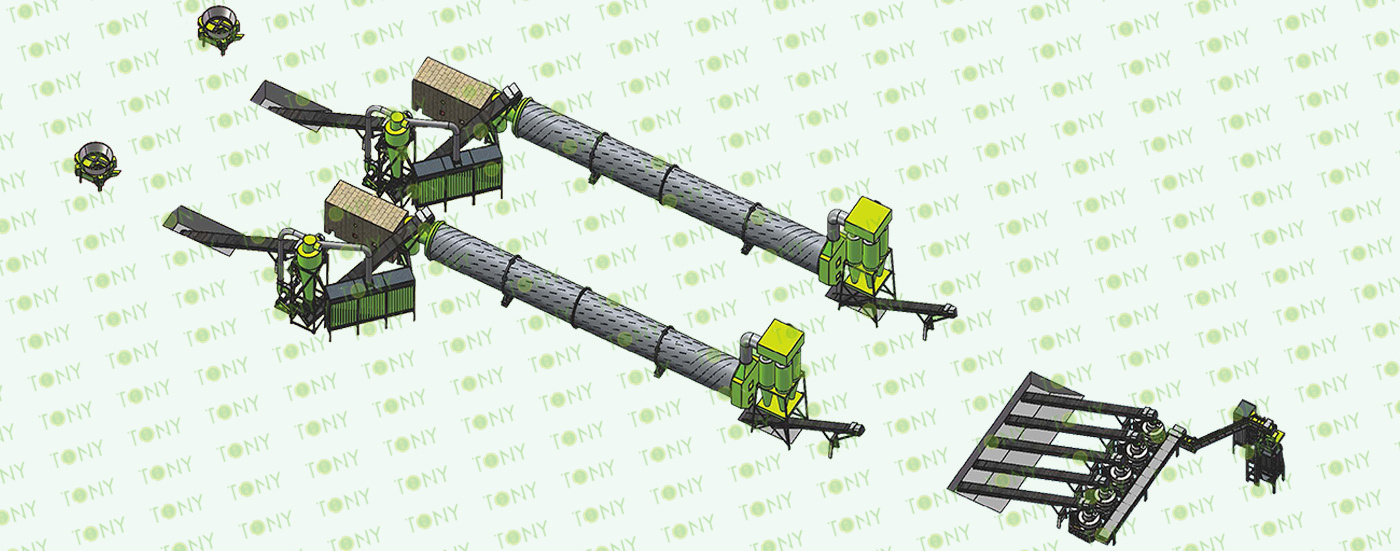

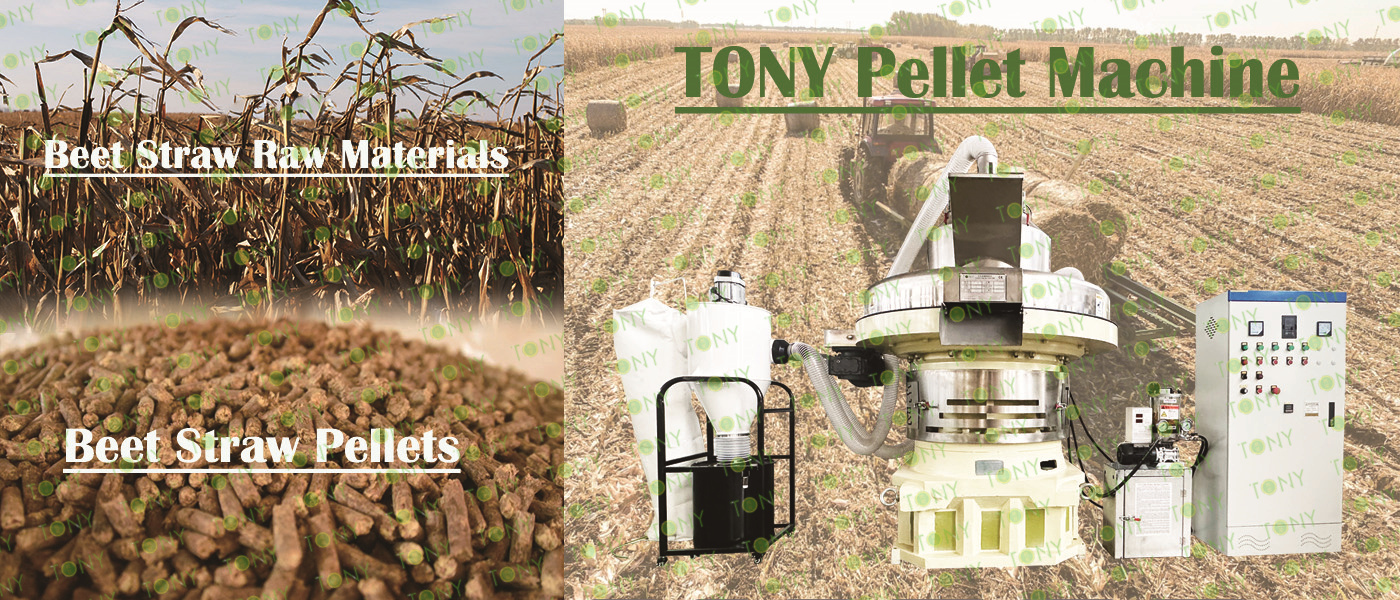
1. With the increasing energy and environmental crisis, biomass energy has been paid more and more attention as a renewable and clean energy. Taking beet straw as an example, the deep exploitation potential is very great. Biomass utilization can be divided into many kinds, and processing biomass into compressed pellet fuel is an advanced biomass utilization way. The content of S in biomass pellet fuel is less than 1/10 of coal, and its replacement of coal combustion can effectively reduce the emission of SO2 in the atmosphere, and the ash generated after combustion is an excellent natural fertilizer. At present, biomass pellet gasification combustion is a clean and environmentally friendly combustion mode, which is of great significance to reduce pollution emissions and protect the atmospheric environment.
2. As a very important agricultural resource in agricultural production, beet straw is very common in rural areas and the amount is very huge, there has been no good treatment method, if the on-site incineration, then it will cause pollution to the environment, and choose beet straw as raw materials for biomass particles, there is a very low raw material cost. If there is a large amount of wheat resources in or around it, it is equivalent to zero raw material costs.
3. Biomass fuel is not only environmentally friendly but also provides a choice for the country's energy needs. The market demand for biomass fuel is increasing, and the price of biomass pellet energy made of beet straw is also steadily increasing. For entrepreneurial projects, there is a very considerable profit margin. Therefore, the use of beet straw to produce biomass pellets is multiple. In addition to protecting the environment and helping to solve employment problems, there are considerable economic and energy sustainability.

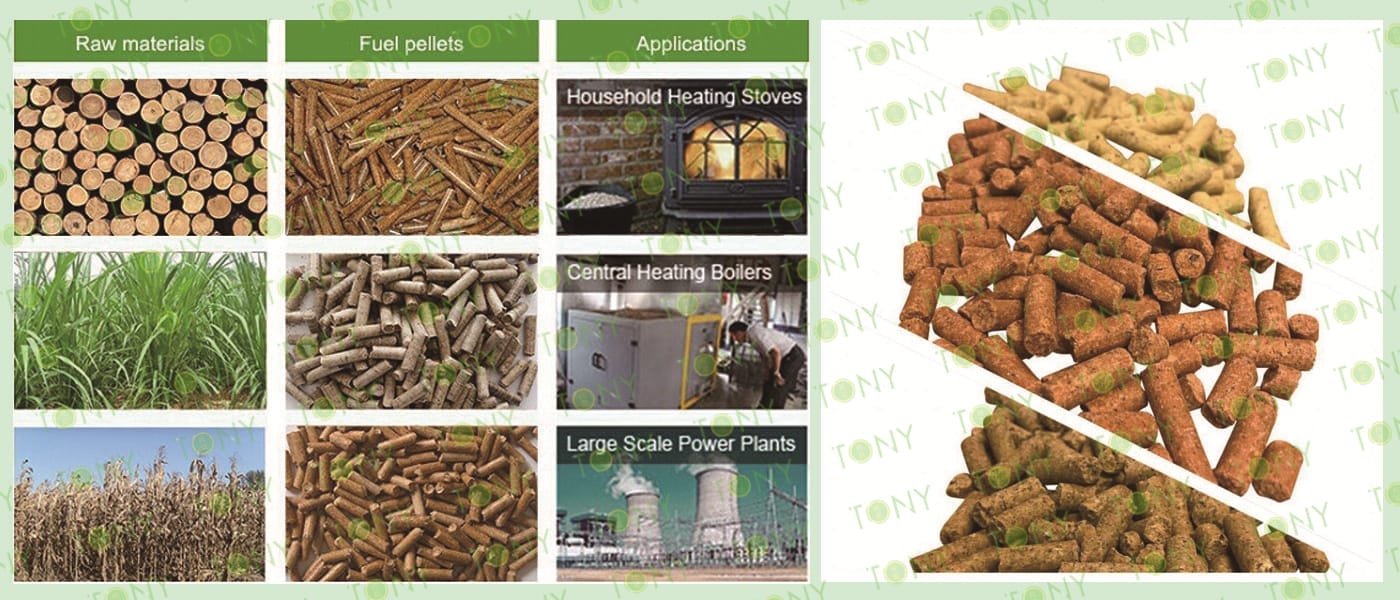
Advantages of beet straw as biomass pellet fuel:
The combustion performance of biomass pellet s is not only reflected in environmental protection and economy, as well as the impact on social development and the improvement of energy structure, but also has its own unique combustion performance advantages, which are mainly reflected in the following points:
1. The calorific value and ash content after combustion of biomass pellet fuel are about 10% lower than that of medium coal. However, biomass pellet fuel burns out in the working situation, while coal can not burn out, and the cinder remains 10% to 15% of the combustible composition. Therefore, the calorific value of the two is comparable in actual use.
2. The ignition property of biomass pellet fuel is better than that of coal, and it is easy to ignite, which greatly reduces the ignition time.
3. The solid emission of biomass pellet fuel is lower than that of coal, which reduces the cost of discharging slag and environmental pollution. The solid emission of biomass pellet fuel is all ash, accounting for about 0.4%~7.0% of the total weight; The solid emissions from coal combustion are a mixture of ash, alkali and residual coal, about 25% to 40% of the total weight.
4. The degree of air pollution and boiler corrosion of coal is much greater than that of biomass pellet fuel. Soot contains a large number of granular C and toxic SO2, CO and other corrosive gases. The main component of biomass pellet fuel is C-H organic matter, there is no granular C and SO2 gas in the flue gas, mainly C-H volatile gas, and its SO2 and CO emissions are close to zero. When burned, the smoke color is less than Ringelmann 1, which will greatly reduce air pollution and carbon dioxide emissions, and biomass pellet fuel is known as a "clean fuel" in the international reputation.
5. The cost and time of using biomass pellet fuel for boiler fuel is less than that of burning coal. A 0.5t boiler burning biomass pellet fuel costs 11% less than burning coal, saving 34% of time, a 0.5t boiler fuel costs relative to coal reduced 10%, saving 16% of time.
6. The continuous combustion time of general biomass pellet fuel is 8 to 10 times higher than that of soft bulk material, and it is in a stable and continuous combustion state.
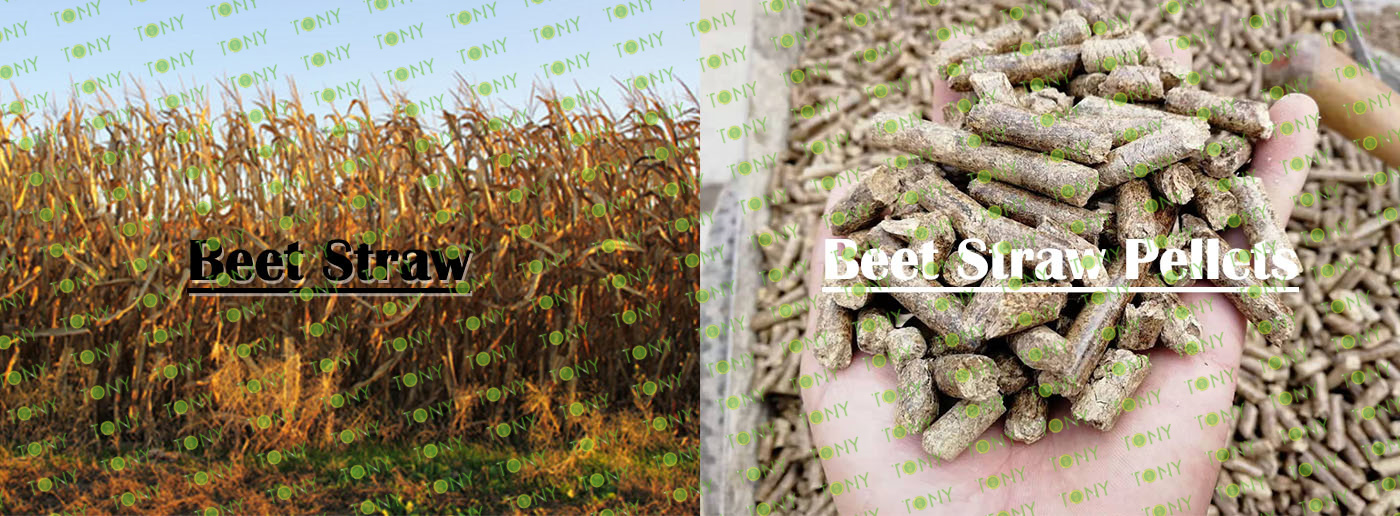
Crop straw pellet fuel technology belongs to the field of biomass energy application, without adding any additives, beet straw, corn straw, beet straw, soybean stalk and other crop straw into pellet fuel, with high density, high molding rate, high caloric value, clean and clean, no pollution, convenient storage and transportation and many other advantages. The product can not only be used as fuel for special boilers, heating furnaces, fireplaces, etc., but also as feed for livestock.
1. Current Situation Of Beet Straw Pellet Fuel Market Demand Pellet Fuel Market Demand
Current market demand:
(1) Production Growth: Biomass pellet production has continued to grow in recent years, and with the advancement of technology and the expansion of market demand, production is expected to further increase.
(2) Technological Development: biomass pellet production technology continues to improve, including raw material pretreatment, molding process, drying technology, etc.
(3) Market Application: Biomass particles are widely used in heating, power generation, industrial boilers and other fields, and the market demand continues to expand.
(4) Policy Promotion: The state has introduced a series of policies and measures to encourage the development and utilization of biomass energy, including tax incentives, financial subsidies and so on.
(5) Standard Formulation: Relevant departments have formulated quality standards and production specifications for biomass pellets to ensure product quality and the healthy development of the industry.
With the increase in global demand for renewable energy and the concern to reduce greenhouse gas emissions, biomass energy as a clean energy alternative to fossil fuels, has been rapidly developed, and many countries are actively promoting the development and utilization of biomass energy.
2.Analysis Of Pellet Fuel Market Prospects Of Beet Straw
With the development of economy and the improvement of people's living standards, the demand for energy is growing. As a renewable energy source, the market demand for biomass pellets continues to expand. With the rapid development of the industry, the upstream and downstream industry chain of biomass particles has gradually improved, including raw material supply, production and processing, logistics distribution, marketing and other links, forming a relatively complete industrial system.
Biomass particles are not only used for power generation and heating, but also widely used in industrial production, agricultural breeding, domestic energy and other fields, and the expansion of the application scope has further promoted the development of the industry.
The biomass pellet industry has shown a good development trend under the promotion of policy support, market demand, technological progress and other factors. In the future, with the further implementation of relevant policies and the continued growth of market demand, the biomass pellet industry is expected to achieve more rapid development.

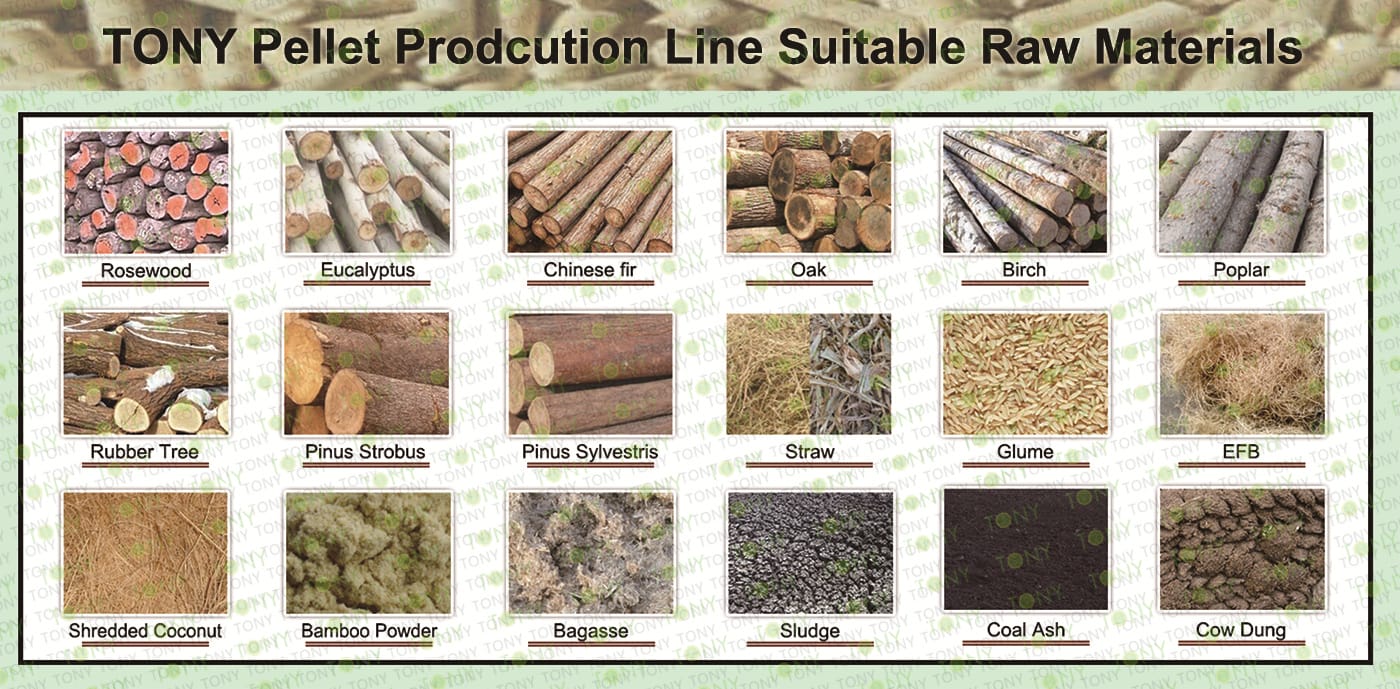
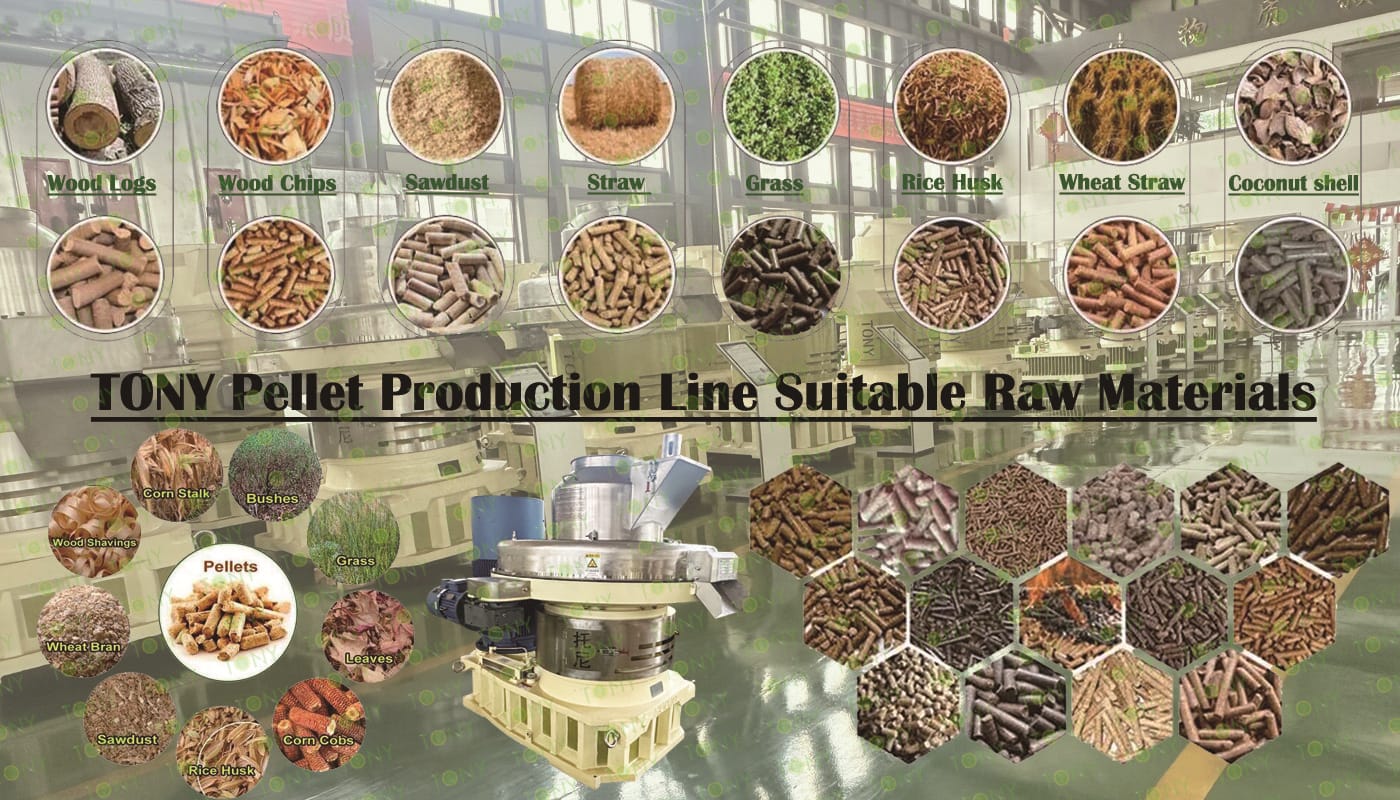

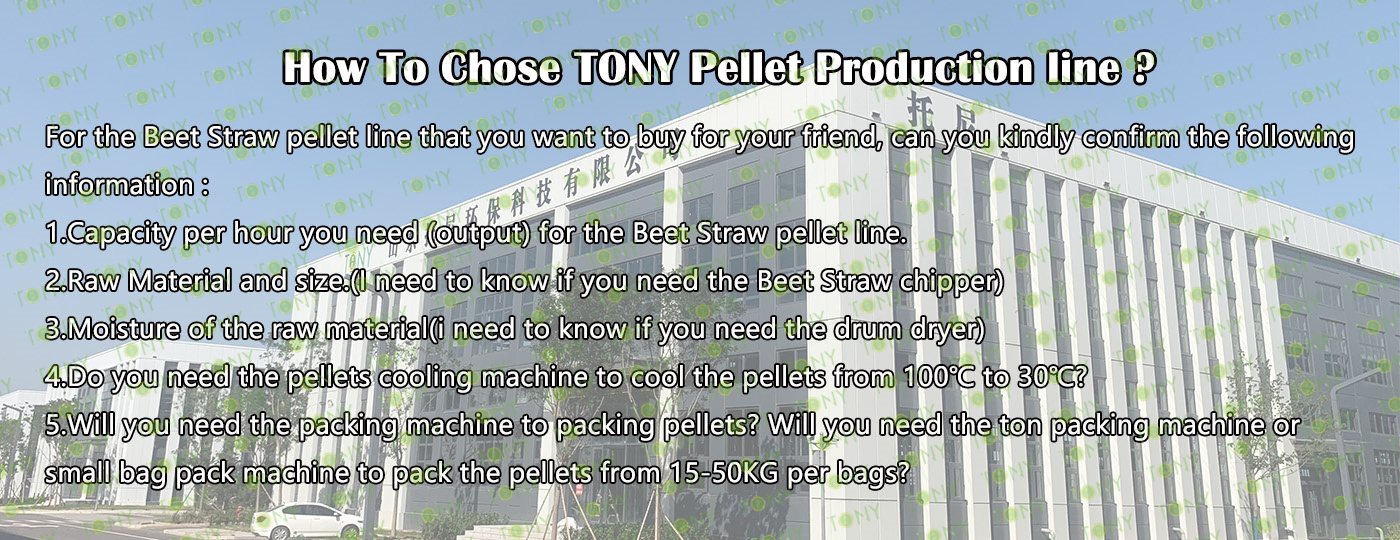

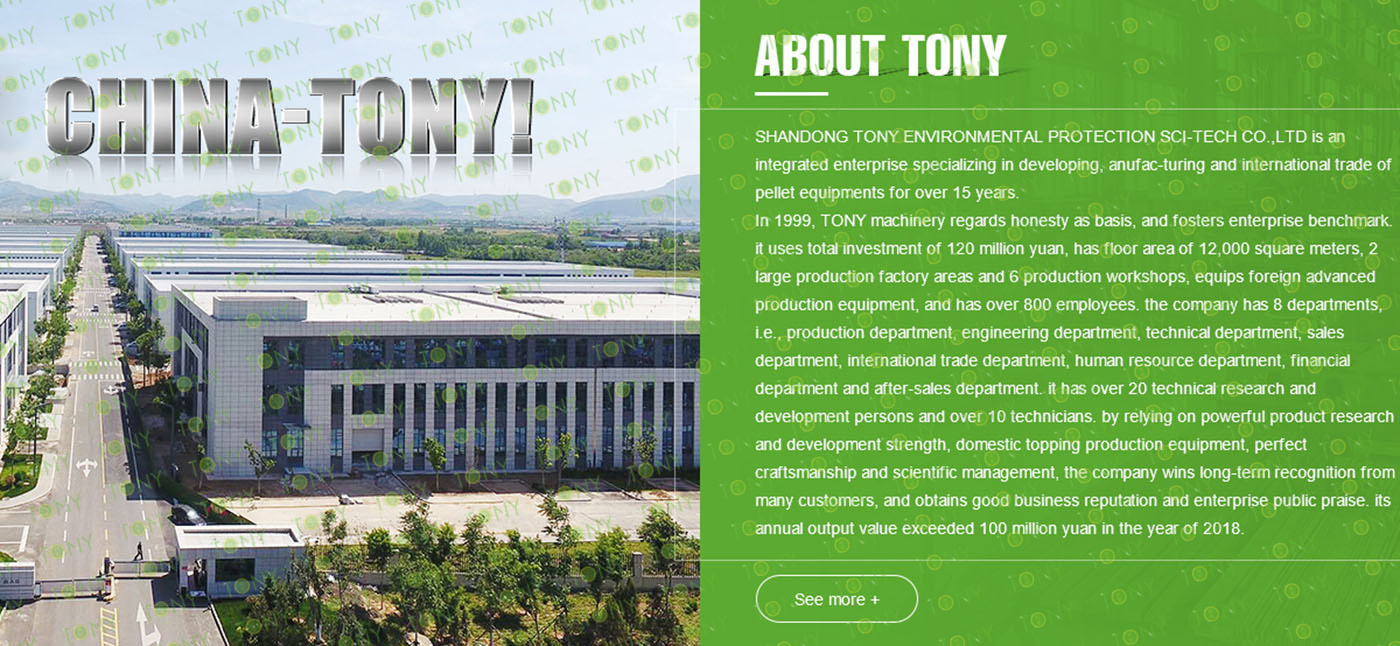
2025 Tony Machinery - All Rights Reserved. Map